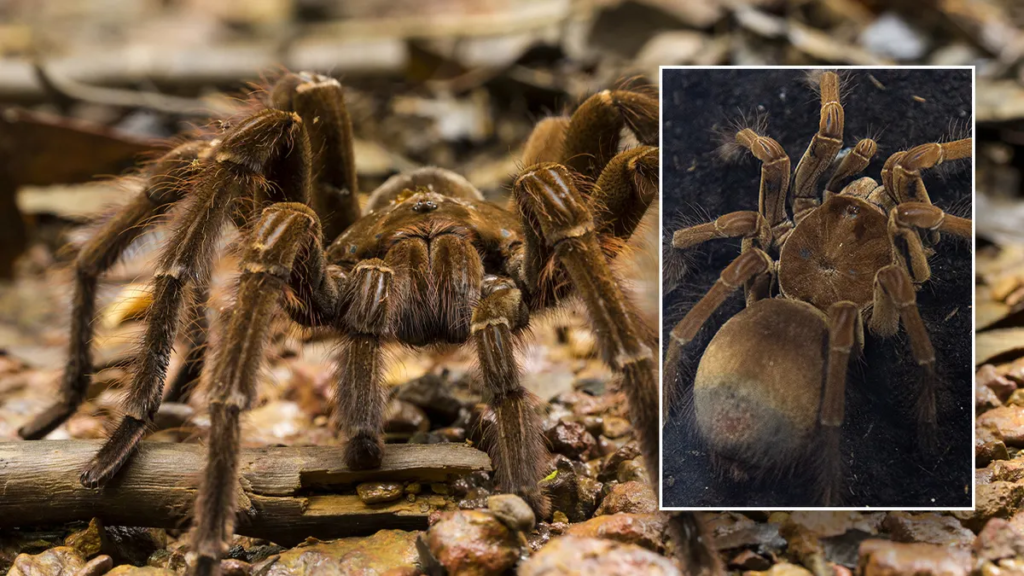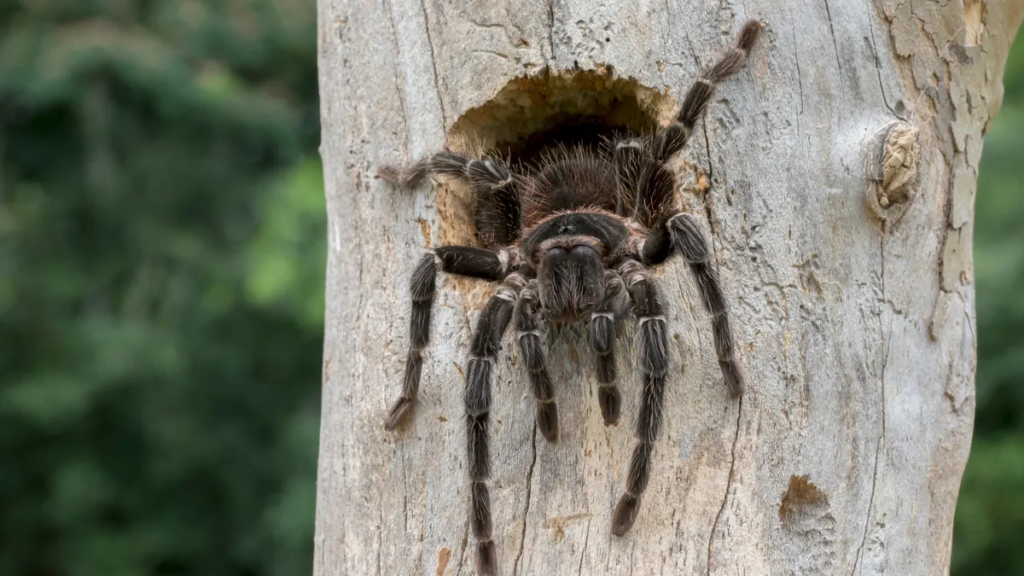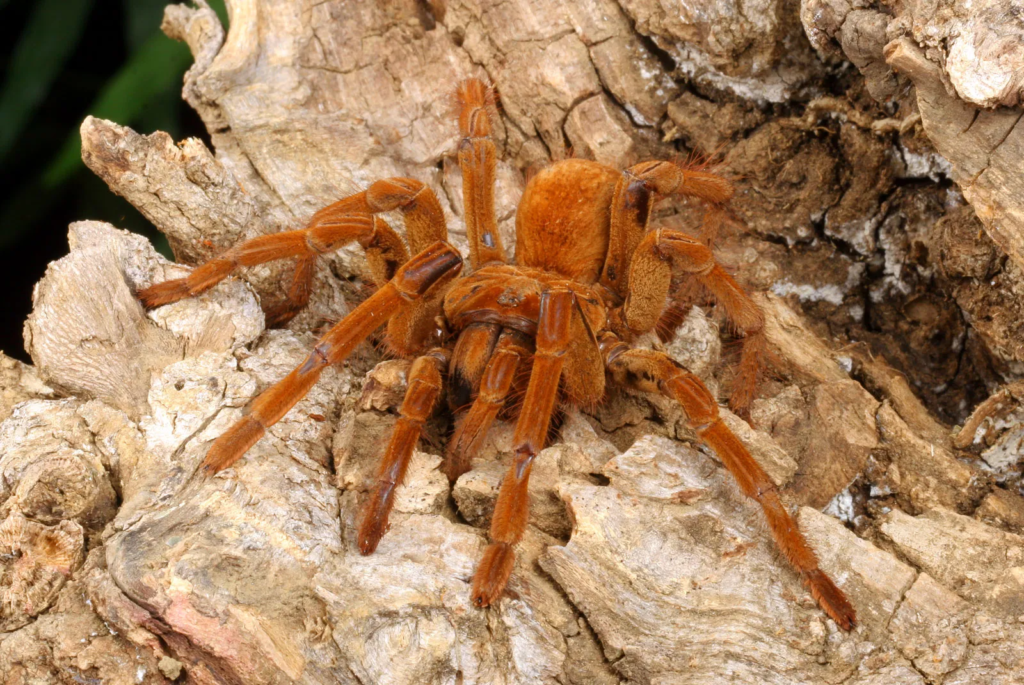The Goliath Birdeater (Theraphosa blondi) stands as a remarkable example of nature’s extremes. As the largest spider in the world by mass and size, it has captivated the curiosity and fascination of arachnid enthusiasts and wildlife experts alike. Native to the rainforests of South America, this giant tarantula is a fascinating creature with unique traits, behaviors, and ecological significance. Its story is one of evolution, survival, and a stark reminder of the diversity in the animal kingdom.
The World’s Largest Spider: What Sets the Goliath Apart?

The Goliath Birdeater is part of the tarantula family and is widely recognized for its impressive size and physical characteristics. It holds the record for being the largest spider in terms of mass and one of the largest by leg span.
Key Physical Features:
- Leg Span: Up to 12 inches (30 cm), approximately the size of a dinner plate.
- Weight: Can reach over 6 ounces (170 grams), making it the heaviest spider in the world.
- Body Length: Measures up to 5 inches (12.5 cm), giving it a robust and imposing appearance.
Its brownish, hairy body is covered with specialized bristles called setae, which are used for defense and sensory functions. The spider’s powerful fangs, nearly an inch long, make it an efficient predator capable of taking down prey much larger than itself.
Habitat: The Rainforests of South America
The Goliath Birdeater is found primarily in the tropical rainforests of northern South America, including regions in Venezuela, Guyana, Suriname, and northern Brazil. These lush, humid environments are ideal for the spider, providing ample cover and abundant prey.
This species primarily inhabits:
- Burrows: The Goliath digs or occupies burrows in the ground, offering protection from predators and climate extremes.
- Leaf Litter and Forest Floors: Its brown, camouflaged body helps it blend into the forest floor as it hunts and rests.
Nocturnal by nature, the Goliath Birdeater is most active at night, using its stealth and size to ambush prey.
Diet: More Than Just “Birds”

Despite its dramatic name, the Goliath Birdeater rarely preys on birds. The name stems from an old illustration showing the spider consuming a hummingbird, but such occurrences are extremely rare. Instead, its diet consists primarily of:
- Insects: Beetles, grasshoppers, and other invertebrates make up the bulk of its meals.
- Amphibians: Frogs and other small amphibians are common prey.
- Small Vertebrates: The spider occasionally feeds on rodents, lizards, and even small snakes.
The Goliath Birdeater is an ambush predator, waiting for unsuspecting prey to approach before striking with its sharp fangs. It injects venom that paralyzes and liquefies the prey’s insides, making it easier to consume. While its venom is lethal to small animals, it poses little risk to humans, usually causing mild pain and irritation if bitten.
Defense Mechanisms: Survival in the Wild

Though it may look fearsome, the Goliath Birdeater is not particularly aggressive toward humans. When threatened, it relies on a variety of defense mechanisms:
- Urticating Hairs: These tiny, barbed hairs are flicked into the air using the spider’s hind legs. If they come into contact with skin or eyes, they can cause severe irritation or discomfort.
- Stridulation: By rubbing its legs together, the Goliath Birdeater produces a hissing sound meant to intimidate predators or threats.
- Defensive Posture: The spider may raise its front legs and reveal its fangs as a warning.
- Biting: As a last resort, it may bite if cornered. While its venom is not medically significant for humans, the size and strength of its fangs can result in a painful wound.
Predators of the Goliath Birdeater include larger animals such as snakes and birds, making its defensive adaptations essential for survival.
Life Cycle and Reproduction
The Goliath Birdeater’s lifecycle begins with the mating process, which is both fascinating and perilous. Male spiders approach females cautiously, as females can sometimes become aggressive and attack their mates. After successful mating, the female lays 100 to 200 eggs in a silk sac, which she guards vigilantly until they hatch.
Lifespan:
- Females: Can live up to 15–25 years, making them one of the longest-living spiders.
- Males: Have much shorter lifespans, often living just 3–6 years, as they usually die shortly after mating.
The long lifespan of the female Goliath Birdeater allows her to produce multiple generations of offspring, ensuring the survival of the species.
Giant Huntsman Spider: A Contender for Largest Leg Span
While the Goliath Birdeater holds the record for mass and overall size, the Giant Huntsman Spider (Heteropoda maxima), native to Laos, is recognized for having the largest leg span, which can also reach up to 12 inches. However, the Giant Huntsman is much lighter and thinner, with a crab-like gait, making it visually distinct from the Goliath’s bulkier appearance.
Human Interaction: A Mix of Fear and Fascination
The sheer size and appearance of the Goliath Birdeater have made it a subject of both admiration and fear. While many people are repelled by its intimidating look, the spider plays an important ecological role by controlling insect and small animal populations in its habitat.
For arachnologists and enthusiasts, the Goliath Birdeater is a marvel of evolution, demonstrating unique adaptations that have allowed it to thrive in its environment. Its presence also highlights the incredible biodiversity of the rainforests and the importance of preserving these ecosystems.
Conclusion: A True Giant of the Spider World
The Goliath Birdeater is not just the largest spider in the world—it is a symbol of the fascinating and diverse adaptations of nature. Its massive size, unique behaviors, and ecological importance make it a creature worth studying and protecting. While its appearance may be intimidating, its role in maintaining the balance of its environment is invaluable.
Also Read: Blue Lobster: The Rare and Fascinating Marine Wonder






